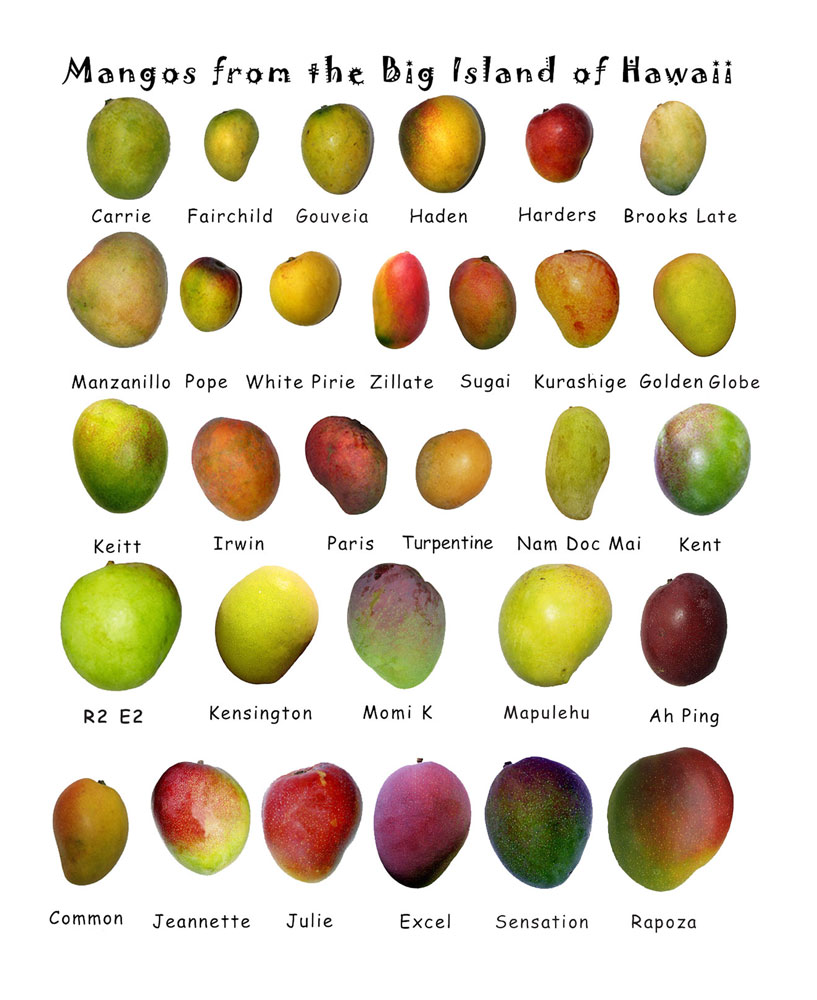What the hell do I know about tropical fruit?
As a boy, the closest I ever got to exotic was shaved coconut on an occasional doughnut or German chocolate cake, neither of which I ate with any relish (see here). Beyond that there were pears, apples (nothing too extreme, just red delicious and pippin), bananas and canned pineapple.
In the spring the fruit selection expanded to include strawberries. Summer brought apricots, peaches, nectarines and plums. And winter brought tangerines and navel oranges. We also got melons sometime in there, but I never ate them so that information never quite registered.
On the whole, our fruit basket was pretty mainstream. It was all delicious, of course, since we had some of our own fruit trees and my grandfather was an orange rancher who had an orchard full of citrus and avocadoes to choose from. But it was still pretty limited.
Or was it just me?
As I look back on my childhood, I see that I had pretty limited tastes (like some of my own children). I hated mustard and mushrooms and melons. I didn’t like most fish. One time when we were dining out, I was so bent on not having any soft drink except grape soda that the owners tried to add some sugar to wine and give that to me. Needless to say, I didn’t like that either.
Then, when I went to college, my tastes began to miraculously expand. Things I would reject had my mother served them suddenly seemed exciting and new. I discovered Thai food. I discovered French food. I learned to cook. And I started drinking. So I also learned to appreciate coconut, kiwi, guava, passion fruit, papaya, mango and a whole host of other fruit, often because they were mixed into icy blended alcoholic beverages.
Many of my adult tastes and fondness for certain types of food have a lot to do with the time of my life when I was first able to make my own choices about food. Gone were the menus prescribed by my mother, however delicious and exotic they may have been. And once I was excused from the family table, the narrow band of foods I enjoyed eating started to expand. The world of food was reborn to me as I acquired the independence to act in it. Sadly, with this new freedom came the consequences of eating too much (Yes, the freshman ten affects men too.) and the need to exercise more frequently.
In my early forays into the kitchen, I made a mango sorbet which tasted great but never quite froze the way I wanted it to. That dessert is the inspiration for this week’s ice cream.
Of course, I still don’t know my way around the tropical kitchen without knocking a lot of things over, so I had to make this recipe twice, but after the initial batch of which my sister-in-law asked “Is this onion ice cream?” I turned the second batch into something more palatable.
Even so, my one piece of advice is to get the freshest mangos you can find. And if you can’t find really ripe ones, consider using mangos out of a jar. The fruit I ultimately used were pretty flavorful but also pretty fibrous. I may need more fiber as I enter the second half of my life, but I still don’t want it in my ice cream.
Mango Ice Cream
(about 1½ quarts)
1 ½ cup milk
¾ cup sugar
2 T flour
A few grains salt
2 eggs or 3 yolks (pasteurized, if possible, see note)
1 lb sliced fresh mangos
¼ cup sugar
1 ½ cup cream
- Heat milk to 180-190ºF with sugar, flour and salt, stirring until thick, cover for 10 minutes.
- Beat eggs and add ½ cup of mixture while beating, then add eggs to mixture.HEALTH NOTE: Since you’re dealing with eggs here, you need to take care when cooking the custard. Too much cooking and the custard gets lumpy, too little and you risk salmonella. Another alternative is to use pasteurized eggs.
- Heat the mixture for one minute over medium heat, then cool with plastic wrap or wax paper pressed onto the top of the mixture to keep it from developing a skin. Cool for several hours or overnight.
- Afterwards, toss the mangos together with the ¼ cup of sugar and set them aside for 30-60 minutes.
- Combine the fruit and cream with the custard and puree with an immersion blender until the mixture is chunk free then freeze it all in an ice cream freezer for about 35 minutes.
- Put the now frozen ice cream into the freezer for a couple of hours to give it a chance to firm up.
NOTE: When freezing ice cream, you need to use an ice cream freezer to ensure that a certain amount of air is mixed into the frozen cream. This gives it a lighter, less icy consistency. When freezing sorbet, you may also freeze it in a popsicle mold, a bowl or on a sheet pan. Be sure to stir the mixture occasionally to limit the size of the ice particles. Larger chunks of ice make for granita, miniscule chunks make for a nice smooth sorbet (an ice cream freezer is ideal).
Photo Credit: “Mangos of Hawaii” from the good folks in cyberspace.
When mangos are ripe they are both really juicy and very messy. The elongated pit also makes them hard to core out without hacking the fruit to pieces. Perhaps this is why some say that mangos are best eaten naked in a bathtub. I’m not sure where I read that, but I’m pretty sure the tub is supposed to be empty. The ice cream would probably be good there too, but feel free to bask in the warm water as you eat. Sound like a good resolution?


